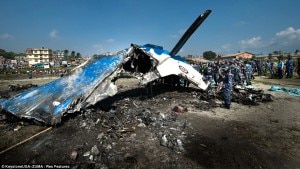
KATHMANDU, Nepal-The Tribhuvan International Airport (TIA) Civil Aviation Office has asked the TIA management to install ‘avian radar’ in detecting movement of birds and animals at the surrounding so that accidents resulting from bird strikes could be brought down and movement of flights are not affected.
The request came after the October 28 incident when birds lying on TIA’s runway forced the management to put off and divert some flights.
TIA, which was recently dealing with problems related to crack on runway, has long been facing threat from birds and animals that can turn deadly if they collide with planes. Just last year, an aircraft belonging to Sita Air crashed in the air, killing all 19 passengers on board after a few minutes it took off as a small vulture stroke the plane.
According to Chandra Lal Karna, director at the TIA Operation Department, preventive measures was required to lessen the accidents due to the birds and animal.
Considering the increased threat, TIA officials have requested the management to set up an ‘Avian Radar’ with high sensitive camera, which they believe will be quite useful to get timely information on movement of birds.
TIA has witnessed more than six dozen bird strikes after 1990, according to a source at aviation authority. Thai Airways Airbus was the first victim of the bird’s strike, as the former encountered vultures while taking off from the runway.
The second major incident took place in 2010 when the DC-10 aircraft of Biman Bangladesh faced similar situation.
Studies show that bird strike is posing great threat to flight operation since the early 2000s due to rapid urbanisation and mounting solid waste dumping in rivers nearby the airport. As a result, movement of birds mainly crows, black kites and eagles and animals like stray dogs and jackal started increasing.
September, October and November is said to be witnessing high risk of bird strike at TIA as birds’ movement surges during these months, according to TIA source.
Though the TIA Civil Aviation Office has adopted several measures to prevent bird strike, the airport is yet to overcome this menace.
To control movement of birds and animals in the vicinity of the runway, TIA civil aviation office has formed a separate team and has also hired five hunters from the Wildlife Department.
The unit has also taken several immediate measures like reducing the amount of garbage nearby the airport and firing in the air to scare away birds.